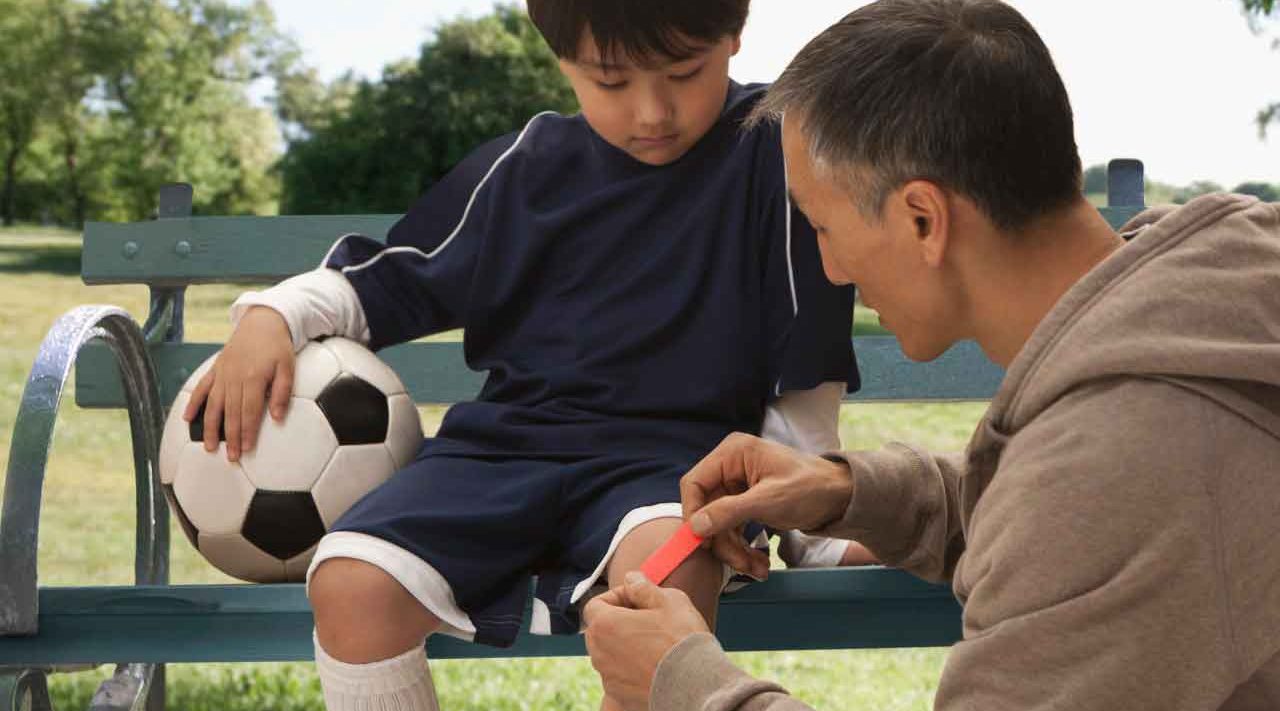How to Prevent the Most Common Sports Injuries in Kids

You can’t keep your kids safe all the time, but with your input many common sports injuries are avoidable.
Young children and teens suffer more than 3.5 million sports injuries every year, but many of the most common sports injuries are preventable with your help.
“Children show increasing independence from their parents, and they’re learning what their body can and can’t do,” says David Schwebel, PhD, director of the University of Alabama at Birmingham (UAB) Youth Safety Lab.
“Children have to constantly evaluate their body’s capacity in terms of balancing, reaching, jumping or leaping, or hitting an opponent or a teammate.”
Schwebel adds that part of the self-evaluation is physical, part is judgment, and part is decision-making skills. Kids, especially those younger than 8, are less coordinated and have slower reaction times than adults because they are still growing and developing. Kids also mature at different rates, with differences in height and weight between kids of the same age. When kids of varying sizes play sports together, there can be an increased risk of injury.
RELATED TOPIC: Protect Your Child Against Concussion
That’s where you come in. Your kids will take physical risks for various reasons, including peer pressure. But, they can make better decisions in real time if you’ve talked to them about sports safety, especially from a young age, and conditioned them to using safety equipment.
Most common sports injuries in kids
Unsupervised playground activities, sports, and bicycle-related injuries occur most often in children between ages 5 and 14 years old, according to Stanford (University) Children’s Health (SCH).
More than 775,000 children, ages 14 and younger, are treated in hospital emergency rooms for sports-related injuries each year, adds SCH. Most were the result of falls, being struck by an object, collisions, and overexertion during unorganized or informal sports activities.
One major study of youth sports injuries seen in emergency departments during an eight-year period looked at the most common causes. The five most common sports injuries were basketball, football, bicycling, (playground activity), and soccer.
“There are huge numbers of children in the United States who play sports,” said Schewbel, a co-author. “Injuries can and do occur when children are active in sports-related activities, and often they could be prevented.”
Risk factors for injury
The cautionary aspect of the study for you is that the authors found a clear difference in injury risk according to age, especially in the early years.
Data showed injuries related to certain recreation activities peaking around specific ages — playground-related injuries remained relevant up to age 9 — while activities such as bicycling caused injuries throughout the age span, up to age 18. Injuries peaked overall at age 14.
Oddly, bowling caused the most injuries to children at the youngest age (age 4), and camping and personal “watercraft” caused the most injuries to the oldest (age 18).
How to prevent the most common sports injuries
Injuries also will occur less frequently when your kids participate in sports through organized and properly managed programs. You should monitor your kids’ coaches to ensure they are qualified to coach a given sport.
A study found that while 92 percent of parents rely on their kids’ coaches to prevent injuries, nearly half of all coaches indicated that they have “felt pressure, either from parents or children, to play an injured child in a game.”
Three out of 10 kids think that good players should keep playing even when they're hurt, unless a coach or adult makes them stop. Your kids need to know there is nothing to be gained by playing injured, and their coaches should know that as well.
Other aspects of sports you can influence are proper warm up and cool down exercises, conditioning that is age appropriate, proper techniques, regular breaks, safe play within the rules, and the importance of hydration.
You should also prevent your kids from playing in pain, or if they’re very tired, and avoid overuse injuries from early specialization. A good example is a young baseball pitcher who throws too much, too hard and throws curve balls too soon.
A national survey by Safe Kids Worldwide found that “misperceptions and uninformed behaviors” in adults are “all too common,” resulting in overuse, even concussions.
The survey found, for example, that 9 out of 10 parents underestimate the length of time kids should take off from playing any one sport during the year to protect them from overuse, overtraining, and burnout.
Kids should take two to three months off from a specific sport, or a season, every year, according to The American Academy of Pediatrics and the American Orthopaedic Society for Sports Medicine. Young athletes should take at least 1 day off each week from organized activity, the survey said.
The findings “are particularly alarming because experts tell us more than half of these injuries are preventable," said Kate Carr, president and CEO of Safe Kids Worldwide.
"There is a gap between what we as coaches and parents can do to keep our kids safe and what we're actually doing. With some simple precautions, we can change these troubling statistics and keep our kids healthy and enjoying the benefits of sports."
Updated:
February 27, 2020
Reviewed By:
Janet O’Dell, RN